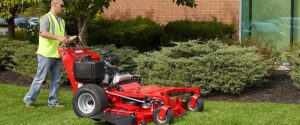As winter blankets the landscape with a pristine layer of snow, commercial property owners and managers gear up for the challenges that come with maintaining safe and accessible premises. While snow removal is a critical aspect of winter property management, many businesses unknowingly make mistakes that can compromise safety, efficiency, and even the longevity of their infrastructure. In this blog post, we’ll explore some of the common commercial snow removal mistakes and provide insights on how to avoid them.
Neglecting Timely Snow Removal:
One of the most common mistakes businesses make is neglecting to remove snow promptly. Allowing snow to accumulate can lead to compacted ice, making it more challenging to remove and increasing the risk of slip-and-fall accidents. It’s crucial to have a proactive snow removal plan in place, including a schedule for regular clearing after each snowfall.
Solution: Invest in a reliable snow removal service that can promptly respond to snow events and keep your property clear and safe. Establish a predetermined snow depth at which removal operations will commence to prevent accumulation-related issues.
Using the Wrong Equipment:
Not all snow removal equipment is created equal, and using the wrong tools for the job can lead to inefficiency and potential damage. Using a snow shovel when a snow blower is needed, or vice versa, can result in wasted time and resources.
Solution: Assess your property’s specific needs and invest in the appropriate snow removal equipment. This may include snow blowers, plows, shovels, or even ice melt. Having a versatile arsenal of tools ensures that you’re prepared for various snow and ice conditions.
Ignoring Safety Protocols:
Safety should be the top priority during snow removal operations. Ignoring safety protocols can lead to accidents, injuries, and even legal liabilities. Failing to adequately mark off areas where snow removal is in progress or neglecting to use proper personal protective equipment (PPE) are common mistakes.
Solution: Develop and enforce strict safety protocols for your snow removal team. This includes the use of proper safety gear, signage to alert pedestrians and drivers, and clear communication regarding areas under maintenance. Regular safety training for your team can also help prevent accidents.
Underestimating Ice Management:
While snow removal is crucial, neglecting the management of ice can be a costly mistake. Ice patches pose a significant risk to pedestrians and vehicles, and failure to address them can lead to accidents and injuries.
Solution: Integrate ice management into your snow removal plan. Use ice melt products strategically to prevent the formation of ice patches. Additionally, consider using sand or traction mats to enhance safety on slippery surfaces.
Ignoring Environmental Concerns:
Some businesses may overlook the environmental impact of their snow removal practices. The overuse of certain de-icing chemicals can harm vegetation, contaminate water sources, and damage infrastructure over time.
Solution: Choose environmentally friendly snow removal products and methods. Opt for eco-friendly de-icing agents, and use them sparingly to minimize environmental impact. Additionally, explore sustainable practices, such as snow storage and disposal, to ensure responsible management.
Lack of Communication with Stakeholders:
Effective communication is key to successful snow removal operations. Failing to communicate with employees, tenants, and other stakeholders about snow removal plans can lead to confusion and disruptions.
Solution: Establish clear lines of communication with all relevant parties. Notify employees and tenants of snow removal schedules, designated parking areas, and any other pertinent information. Transparency and communication help everyone understand their roles and responsibilities during winter weather events.
Neglecting Regular Maintenance:
Snow removal equipment is an investment, and like any other machinery, it requires regular maintenance. Neglecting maintenance can lead to breakdowns, delays in snow removal operations, and increased repair costs.
Solution: Implement a routine maintenance schedule for all snow removal equipment. This includes checking and replacing worn-out parts, changing fluids, and ensuring that all equipment is in optimal working condition. Regular maintenance not only prolongs the lifespan of your equipment but also enhances its efficiency.
Conclusion:
Commercial snow removal is a critical aspect of winter property management, and avoiding common mistakes is essential to ensure safety, efficiency, and the well-being of your infrastructure. By addressing issues such as timely removal, using the right equipment, prioritizing safety, managing ice, considering environmental impact, fostering communication, and implementing regular maintenance, businesses can navigate winter weather challenges successfully. Proactive planning, investment in quality equipment, and a commitment to safety will go a long way in ensuring that your commercial property remains accessible and secure during the snowy months.



